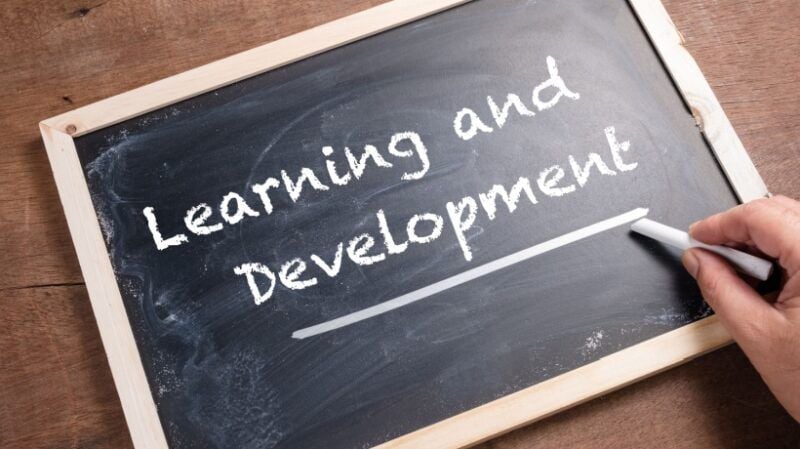
The New Age Of L&D: The Heart Hasn’t Changed
Allow me share something I have actually been seeing up close: Discovering and Growth (L&D) isn’t simply evolving, it’s transforming at a pace the majority of us have not experienced prior to. Think of it. 5 years earlier, we were speaking about online discovering as a support group. Today, it’s the backbone of how organizations reskill, keep, and encourage their workforce. Functions are shifting, skills are constantly being redefined, and growth plans look nothing like the ones we developed a years earlier.
As an L&D specialist, I frequently hear leaders ask: “What are the most useful innovations I can try for my labor force? How do I even know what skills to prioritize?” If you’ve been wrestling with these concerns, you’re not the only one. Let’s unload what’s happening and where you can focus your power.
1 From Work Responsibility To Abilities: The Change That Modifications Every Little Thing
We made use of to design learning around fixed job descriptions. Today, job does not fit neatly right into those boxes anymore. Organizations are relocating towards skills-first techniques. Why? Because skills are the true currency of growth.
- Ability taxonomies and frameworks (like those developed into modern-day LMS systems) are aiding businesses identify what’s missing today and what will certainly be essential tomorrow.
- Inner skill markets are arising, where employees are matched to jobs based upon skills rather than job titles.
- For you as a leader, this suggests reskilling isn’t a side project; it’s your strongest retention technique.
2 AI Is Here, But It Requirements Guardrails
AI is no more advanced; it’s currently inside your LMS and learning technique, pushing learners with individualized suggestions. And when done right, it feels like magic.
- Individualized paths
AI analyzes student behavior and recommends programs aligned with profession ambitions. - Time-saving automation
Admin jobs like registration, reporting, and responses loops are becoming simpler. - Skill presence
AI-powered dashboards give leaders clarity on labor force preparedness.
However below’s my caution: AI is just as strong as the data and administration behind it. Be curious, experiment, but additionally ask suppliers hard inquiries regarding openness, predisposition, and data safety.
3 Skills-Based Discovering Satisfies Human-Centered Layout
While modern technology can scale, human-centered design makes it stick. The technologies I’m most delighted about are the ones that blend tech with compassion:
- Microlearning and nudges
Small, just-in-time bursts of understanding that respect learners’ hectic schedules. - Understanding in the flow of work
Integrations with MS Teams, Slack, or CRMs where employees already spend their time. - Career-linked discovering
Development plans that straight attach abilities discovered to promos or brand-new opportunities.
These aren’t simply “nice-to-haves.” They’re becoming anticipated.
4 Immersive Understanding Is No More An Experiment
Online Reality (VR) and Increased Truth (AR) were once buzzwords. Today, they’re functional devices, in addition to much-utilized simulations, scenario-based discovering, and gamification, particularly for remote and worldwide teams.
- Picture a frontline worker exercising safety and security procedures in virtual reality, risk-free.
- Or a new supervisor stepping into a gamified simulation to practice management discussions.
These immersive approaches raise retention and confidence, especially in high-stakes roles. And the good news? Prices are decreasing, making them much more attainable for a broader series of organizations.
5 Collaboration Is The New L&D Superpower
Here’s the truth: in the brand-new period, L&D can not succeed in a silo anymore. One of the most impactful programs I’ve seen were birthed from strong partnership between human resources, IT, and magnate.
- HR supplies the lens of ability and society.
- IT makes sure systems incorporate perfectly.
- Business leaders tie learning to technique and growth goals.
When these voices collaborated, discovering becomes an organization driver, not simply a HR feature.
If You’re Unclear About Abilities Or Priorities, Begin Right Here
Several leaders inform me, “I’m not also clear about which abilities matter most.” That’s completely easy to understand. The landscape in this brand-new era of L&D is noisy. Below’s a simple technique I recommend:
- Pay attention to your service technique
What’s altering in your market, product, or client assumptions? - Consider your labor force data :
Where are people leaving? Which groups are having a hard time? - Start small with pilots
Select one area, like electronic fluency, leadership preparedness, or customer experience, and run a focused program. Procedure, find out, scale.
Remember: you don’t need to do every little thing at once. Also tiny, intentional steps can develop big surges in society and efficiency.
Last Idea: The Heart Of L&D Hasn’t Transformed
Yes, the tools, duties, and approaches are shifting considerably. Yet at the heart of it, also the brand-new era of L&D is still concerning unlocking human possibility. As CLOs and L&D leaders, our task is to produce settings where people really feel capable, supported, and influenced to grow. Whether via AI-driven personalization, immersive simulations, or simply much better discussions between supervisors and teams, the objective continues to be the same: to assist individuals flourish to make sure that companies can thrive.
If you wonder about which technologies can work best for your labor force, begin exploring. Attempt something tiny, determine the impact, and don’t hesitate to iterate. Since in 2025, one of the most successful L&D leaders will not be the ones that did every little thing, they’ll be the ones who moved with intention.